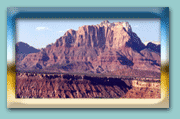|
About This Site This site is a bit of an odd mixture of mathematical ideas, some relatively easy (circumference of a circle) and others rather advanced (total differential). I have developed these animations as the need arose in various courses which I teach. The animations and demos are not meant to be stand-alone devices, but rather supportive material for the classroom lecture environment. They were made as streamlined and simple as possible so that they can be used at different levels and in different ways. Flexibility has been my goal. No explanations come with these animations and demos, the idea being that the teacher will provide his own explanation to his own students. I have had students go to web sites to use a virtual lab or demonstration and get so lost in the verbiage that the experience did more harm than good. It has been my experience that since the advent of "hands-on" science and mathematics (a great basic idea), many educators have stopped training students to think abstractly (a very, very bad idea). More often than not these days, If a student can't hold it in his hand, he can't imagine the object or the process. These animations and demos are my attempt to improve this terrible situation. I have also put together some animations for astronomy courses, and have helped our paleontologist design and build a virtual museum of fossils and a virtual laboratory of stratigraphy. I invite you to visit those, described below, if you have the interest:
|





